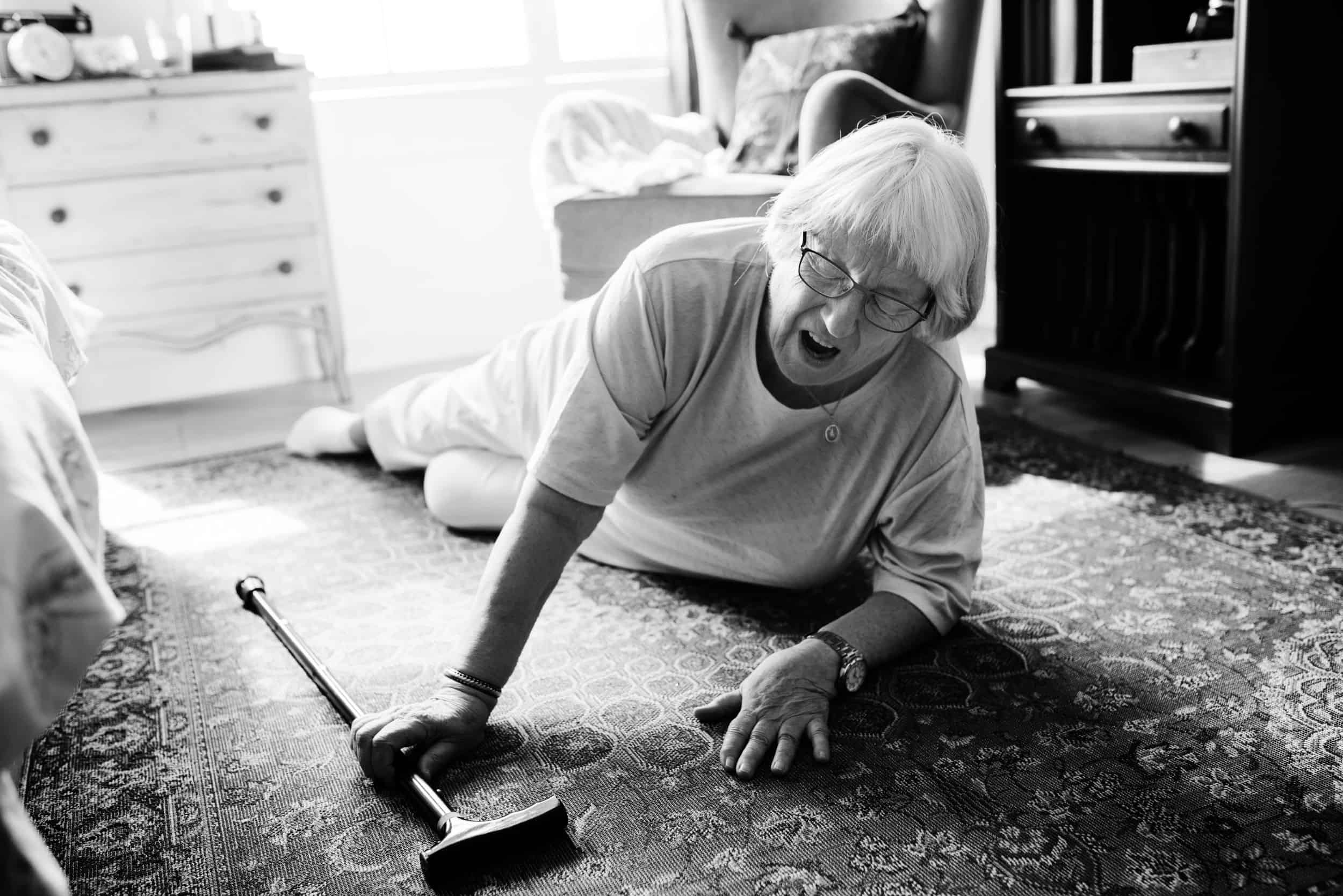When you start to become unsteady on your feet and find yourself falling, it’s common to go through some phases before turning to a mobility aid.
You may experience some denial (“I don’t fall that often, it’s not that big a deal”), fear (“I don’t want to end up in the hospital or a nursing home permanently”), and eventual acceptance (“Okay, time to take this seriously!”).
Then comes the next step: problem solving.
At first, you may believe there is one simple thing you can do to solve the problem. It seems like if you just come to terms with using one device – a cane, a walker, a scooter – it will do the trick.
While that may be true in some cases, it’s not usually that simple.
Why One Device Is Usually Not Enough
Think about daily life. What different types of spaces do you move through? Is there one device that would give you the safety and mobility you need in all of them?
- Some spaces have smooth surfaces underfoot, others are rough.
- Some have lots of people around, others don’t.
- You’re sometimes close to walls and sturdy objects to hold onto. Other times you’re in open spaces.
- The distance you travel varies depending on the space and what you want to do.
All of these spaces – work, home, doctor’s offices, shopping centers, malls, parks, gardens – have different environmental challenges that create a variety of fall risks. They also represent a variety of activities that cause fatigue or situations that can make it harder to concentrate on your balance.
There is no one mobility aid that adapts to every environment and situation.
Mobility Aids Are Like Pairs of Shoes
People tend to have multiple mobility aids for the same reason they have different types of shoes. Just as you have to put on different pairs depending on your plans for the day, you often need different mobility aids depending on the environments you plan to move through.
There are many options in mobility aids, each offering a different benefit to help you live your life the way you choose from day to day.
Canes
A popular choice for people just starting to experience difficulty with balance or fatigue, canes have the benefit of being the simplest mobility aid option.
- Typically lightweight and portable.
- Allows for passage through narrow spaces.
- Supports fairly natural movement.
Why You’ll Use Canes
If you mostly retain the ability to be upright and walk, canes are only a slight modification to the movements you’re used to. But you may find that you need more than a slight modification in certain circumstances.
Why You Won’t Always Use Them
At work, the concentration it takes to walk or maintain balance while standing with the cane may make it difficult to focus on your coworkers. Outside, you may have to watch the terrain over sidewalks and rough paths so closely that you can’t enjoy the world around you.
When to Use Them
Of course, that doesn’t mean you won’t still use your cane in environments that feel safe, such as certain parts of your home. If you’ve taken care to remove hazards like hard furniture or clutter on the floor, the risk of injury from a fall may be less. Where safe, canes are convenient.
Traditional Walkers and Rollators
When it becomes clear that a cane (or a set of two, one for each arm) doesn’t provide enough stability for many situations, a common next step is to add something sturdier to your collection: a four-legged walker or rollator.
- Both sturdy and portable.
- Enables walking in situations where you would otherwise feel at risk.
- Aids balance while standing or walking.
Why You’ll Use Walkers and Rollators
Whether you choose a simple walker (which you lift with each step) or a rollator (essentially a walker on wheels that you don’t have to lift), the primary benefit is that it allows you to walk and stand safely when canes don’t feel safe enough. They do have their limits, however.
Why You Won’t Always Use Them
If your mobility impairment is due to fatigue (perhaps caused by a neurological disorder such as MS), it may not be realistic to walk as far as you used to. Traveling by foot to the store, scenic hikes through a state park, walking through a museum – these activities might be too much.
When to Use Them
But for shorter distances, walkers and rollators are ideal for allowing you to get an amount of moderate exercise, which is important for your overall health.
Scooters and Wheelchairs
For longer distances, especially in environments where you’re not sure you’ll be able to sit and rest if you need a break, powered or conventional seated devices are ideal.
- No fall risk when seated.
- Fatigue is not a concern (at least not lower-body fatigue).
- You can focus on people and things around you instead of on your balance.
Why You’ll Use Scooters and Wheelchairs
The primary benefit here is comfort, especially if you choose to purchase a powered scooter or wheelchair. Of course, because of their bulk and reliance on relatively smooth, level surfaces, scooters and wheelchairs are not ideal in every environment.
Why You Won’t Always Use Them
But the space they take up isn’t the only issue with relying solely on seated devices. The real downside is the acceleration of physical decline that occurs when you stay off your feet. You can become increasingly dependent on them as your mobility impairment progresses.
When to Use Them
Just as is the case with everyone, there’s nothing wrong with sitting down to get around – no more than driving a car to travel. The key is to avoid a sedentary lifestyle. With a mobility impairment, that means using different devices as long as you can, not just seated ones.
The LifeGlider
Again, there is no one device that is perfect for every environment or situation. But as it combines many of the benefits of other devices, the LifeGlider is probably the most adaptable mobility aid you’ll have in your collection.
- No fall risk (like a scooter or wheelchair).
- Sturdy and portable (like a foldable walker or rollator).
- Supports natural, upright movement (like a cane).
Why You’ll Use the LifeGlider
Because you strap in at the waist, it allows for hands-optional movement that feels less like leaning over a walker and more like walking upright with a cane, only you’re protected from falling. There’s a small seat that allows for resting as well.
Why You Won’t Always Use It
Does that mean the LifeGlider is the only device you’ll ever use? Not at all.
You’ll still grab your cane or walker from time to time, when all you need is a little support to get across the room, or something portable to lean on while standing. You’ll still use a scooter to spend the afternoon shopping, because being on your feet that long is too much.
When to Use It
But there are many activities you’ll find the LifeGlider is uniquely suited for:
- Taking a walk around the block.
- Standing in the kitchen long enough to cook and do the dishes.
- Sweeping the floor or doing other chores around the house.
- Working in settings where you have to be on your feet for long periods of time.
- Spending some quality time in your garden.
- Giving hugs to friends and family while visiting.
In some situations, the LifeGlider may be a replacement for your current mobility aid. But it’s more likely you’ll see it as a valuable addition to your collection.
Like a new pair of shoes, you may or may not “wear” it every day – but that makes it no less useful to your daily life.
Discover more about how a new kind of mobility aid can help enable you to do life the way you want to live it. Ask us about the LifeGlider today.


